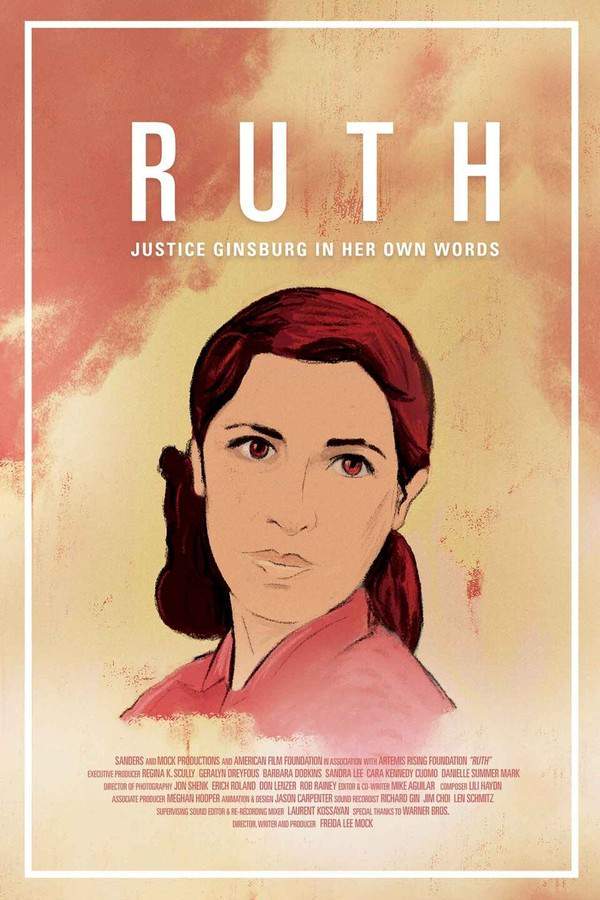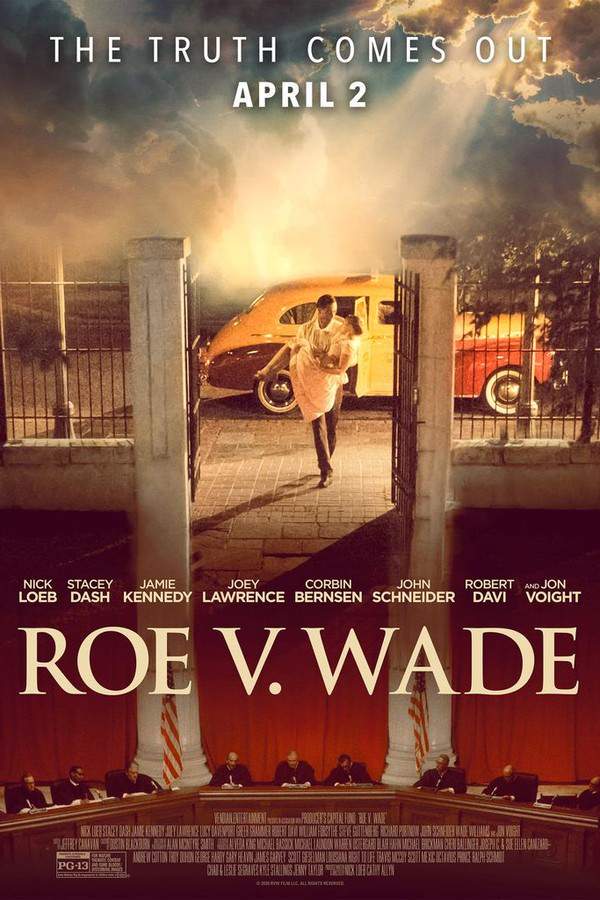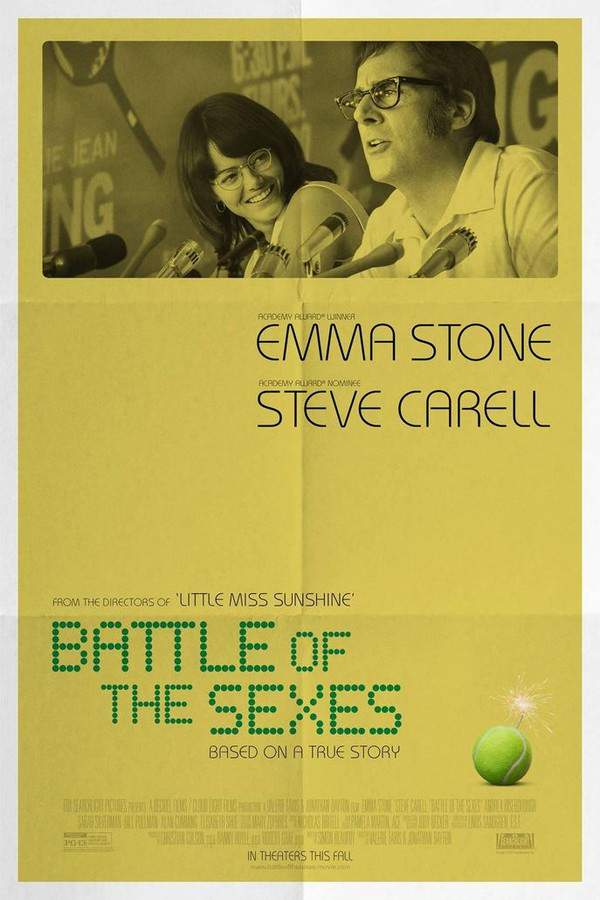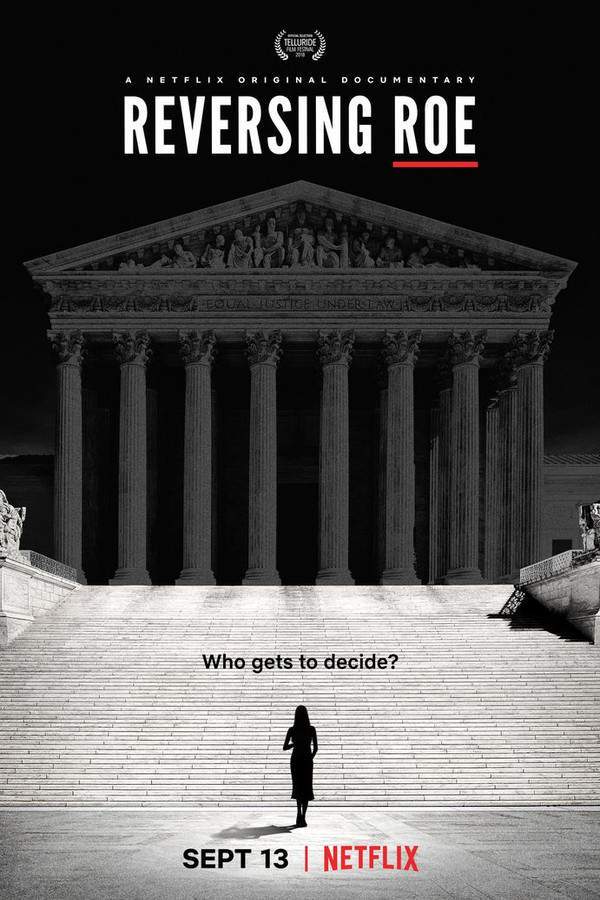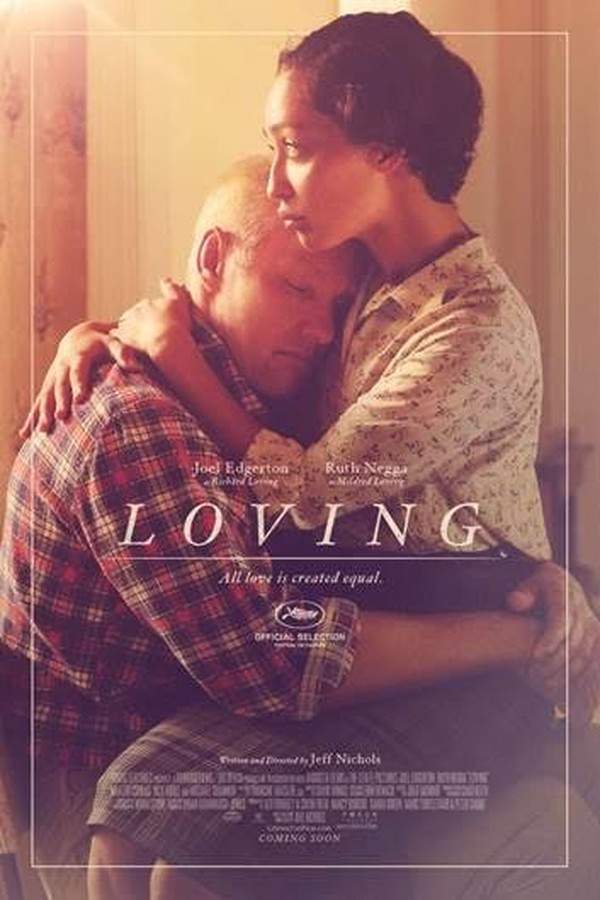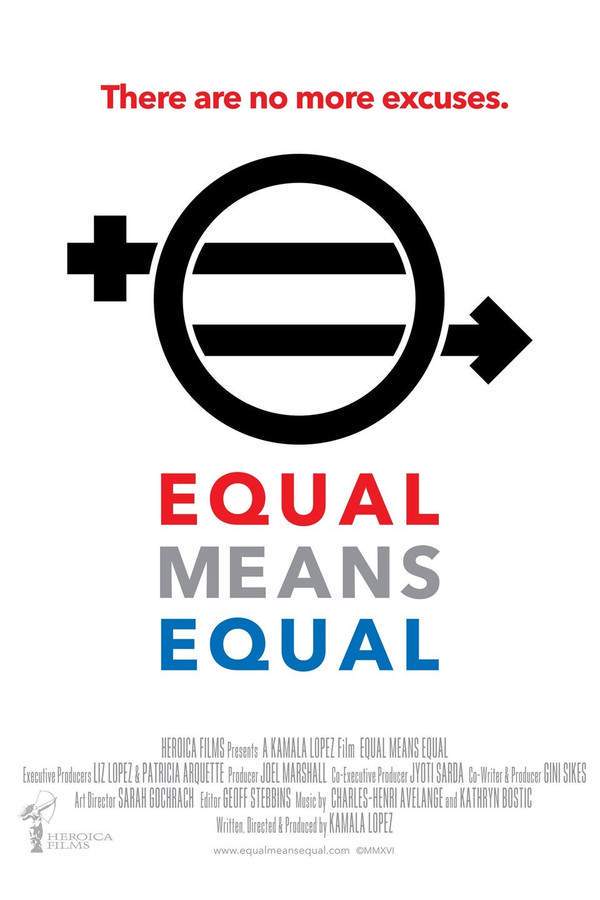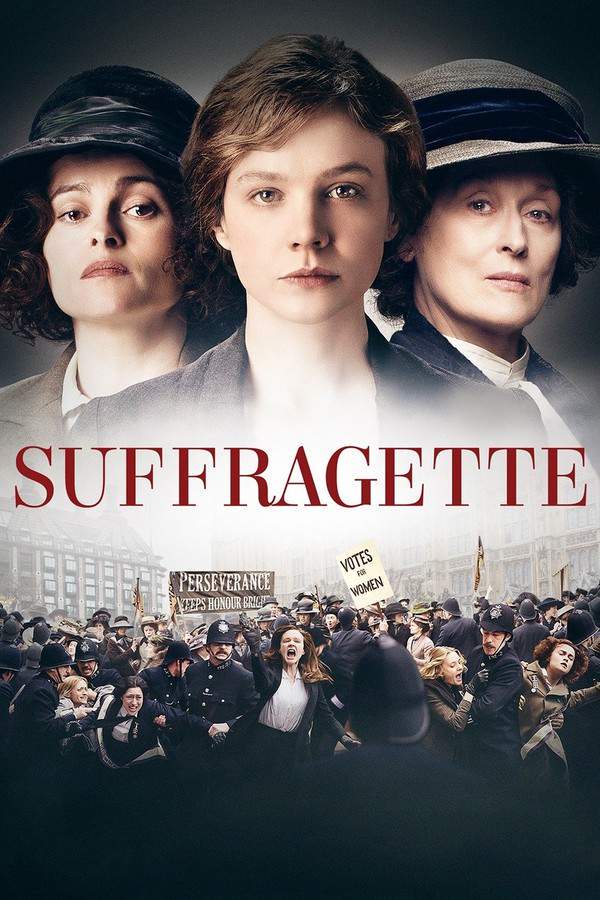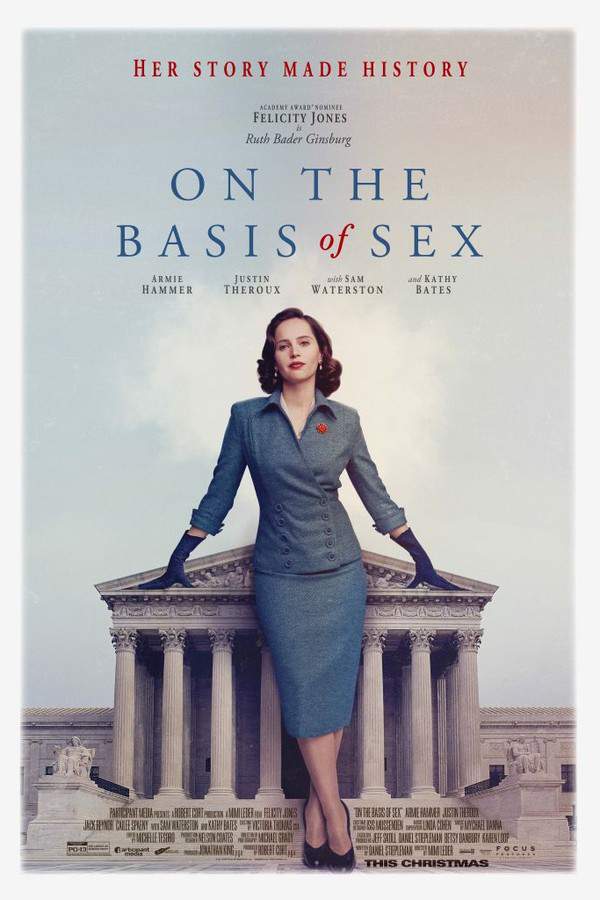
On the Basis of Sex
Ruth Bader Ginsburg, a young lawyer and mother, challenges societal norms and confronts personal and professional obstacles while fighting for gender equality. Alongside her husband, Martin, she takes on a pivotal tax case that has the potential to fundamentally alter the legal system and establish her legacy as a champion for women’s rights. The case becomes a catalyst for a broader legal battle against gender discrimination.
Warning: spoilers below!
Haven’t seen On the Basis of Sex yet? This summary contains major spoilers. Bookmark the page, watch the movie, and come back for the full breakdown. If you're ready, scroll on and relive the story!
On the Basis of Sex (2018) – Full Plot Summary & Ending Explained
Read the complete plot breakdown of On the Basis of Sex (2018), including all key story events, major twists, and the ending explained in detail. Discover what really happened—and what it all means.
In 1956, Ruth Bader Ginsburg, portrayed by Felicity Jones, embarks on her first year at Harvard Law School. While she diligently attends her own classes, she also takes on the responsibility of attending her husband Martin’s lectures, played by Armie Hammer, who is in his second year but has fallen ill due to cancer. Amidst her academic pursuits and caring for their infant daughter Jane, represented by Cailee Spaeny, Ruth shows remarkable resilience.
As the years pass, Martin’s cancer goes into remission, leading him to accept a position at a prominent firm in New York. However, Ruth faces an obstacle when she petitions Dean Griswold, a character portrayed by Sam Waterston, at Harvard to allow her to complete her law degree at Columbia Law School. To her dismay, he adheres strictly to university policies, prompting Ruth to transfer to Columbia instead. Even with her stellar academic performance, she struggles to secure a position at a law firm due to the prevalent gender biases of the era. Ultimately, she takes on a teaching role at Rutgers Law School, focusing on “Sex Discrimination and the Law.”
In 1970, Martin introduces Ruth to a pivotal case: Moritz v. Commissioner, concerning Charles Moritz, portrayed by Chris Mulkey. Moritz, a man who employed a nurse for his aging mother, finds himself denied a tax deduction that was unfairly awarded only to specific categories including women. Ruth seizes this moment to challenge gender discrimination through the legal system, believing that by setting a precedent for a man discriminated against, she can pave the way for future cases affecting women.
Determined, Ruth approaches Mel Wulf from the ACLU for assistance, but he initially declines. After some persuasion from activist Dorothy Kenyon, who transforms from skepticism to support, Ruth inspires Wulf to come on board. She then travels to Denver to meet Moritz, who agrees to allow Ruth and the ACLU to represent him pro bono, understanding the far-reaching implications of their case.
As the legal battle escalates, James H. Bozarth, portrayed by Jack Reynor, steps forward to lead the defense. He meticulously researches gender-related sections of the US Code, presenting a strong argument against the constitutionality of the existing law. Meanwhile, Ruth, lacking courtroom experience, grapples with anxiety during practice sessions. With Wulf’s encouragement, Martin takes the lead in the courtroom, while Ruth argues the equal protection aspects.
Amidst the proceedings, the government presents a meager settlement of one dollar to Moritz, which Ruth counters with a more substantial proposal: acknowledgment of the deduction claim with a declaration about the unconstitutional nature of the gender restrictions. Faced with refusals from the government, the case proceeds to the Tenth Circuit Court of Appeals.
During the oral arguments, Martin inadvertently allocates more time than planned to their position. Nervous yet determined, Ruth utilizes her rebuttal with clarity and conviction, arguing for the urgency to evolve laws alongside societal changes. She asserts, > “Societal roles that existed one hundred years ago, or even twenty years ago, no longer apply.” When challenged regarding the Constitution’s silence on “woman,” she boldly retorts that it also lacks the term “freedom.”
As they await the court’s decision, Ruth, the Ginsburgs, and Wulf share a moment of celebration, recognizing her transformative growth as a lawyer. The narrative concludes with triumphant titles revealing the Court of Appeals’ unanimous ruling in favor of Moritz. Ruth’s groundbreaking work leads to the co-founding of the Women’s Rights Project at the ACLU, dismantling numerous discriminatory laws, and in 1993, she is voted into an associate justice position on the U.S. Supreme Court. The film closes with the real Ruth Bader Ginsburg ascending the steps of the Supreme Court building, symbolizing her legacy in the fight for justice and equality.
Last Updated: November 04, 2024 at 01:43
Unlock the Full Story of On the Basis of Sex
Don't stop at just watching — explore On the Basis of Sex in full detail. From the complete plot summary and scene-by-scene timeline to character breakdowns, thematic analysis, and a deep dive into the ending — every page helps you truly understand what On the Basis of Sex is all about. Plus, discover what's next after the movie.
On the Basis of Sex Timeline
Track the full timeline of On the Basis of Sex with every major event arranged chronologically. Perfect for decoding non-linear storytelling, flashbacks, or parallel narratives with a clear scene-by-scene breakdown.

Characters, Settings & Themes in On the Basis of Sex
Discover the characters, locations, and core themes that shape On the Basis of Sex. Get insights into symbolic elements, setting significance, and deeper narrative meaning — ideal for thematic analysis and movie breakdowns.

Similar Movies to On the Basis of Sex
Discover movies like On the Basis of Sex that share similar genres, themes, and storytelling elements. Whether you’re drawn to the atmosphere, character arcs, or plot structure, these curated recommendations will help you explore more films you’ll love.
Explore More About Movie On the Basis of Sex
On the Basis of Sex (2018) Scene-by-Scene Movie Timeline
On the Basis of Sex (2018) Movie Characters, Themes & Settings
On the Basis of Sex (2018) Spoiler-Free Summary & Key Flow
Movies Like On the Basis of Sex – Similar Titles You’ll Enjoy
RBG (2018) Complete Plot Breakdown
Ruth: Justice Ginsburg in Her Own Words (2021) Full Summary & Key Details
RUTH - Justice Ginsburg in her own Words (2019) Spoiler-Packed Plot Recap
Roe v. Wade (2021) Detailed Story Recap
Citizen Ruth (1996) Movie Recap & Themes
Battle of the Sexes (2017) Film Overview & Timeline
Roe v. Wade (2019) Movie Recap & Themes
Saint Judy (2019) Movie Recap & Themes
Battleground (2022) Ending Explained & Film Insights
Reversing Roe (2018) Movie Recap & Themes
Mrs. America (1000) Detailed Story Recap
Roe vs. Wade (1989) Movie Recap & Themes
Loving (2016) Complete Plot Breakdown
Equal Means Equal (2016) Movie Recap & Themes
Suffragette (2015) Story Summary & Characters




